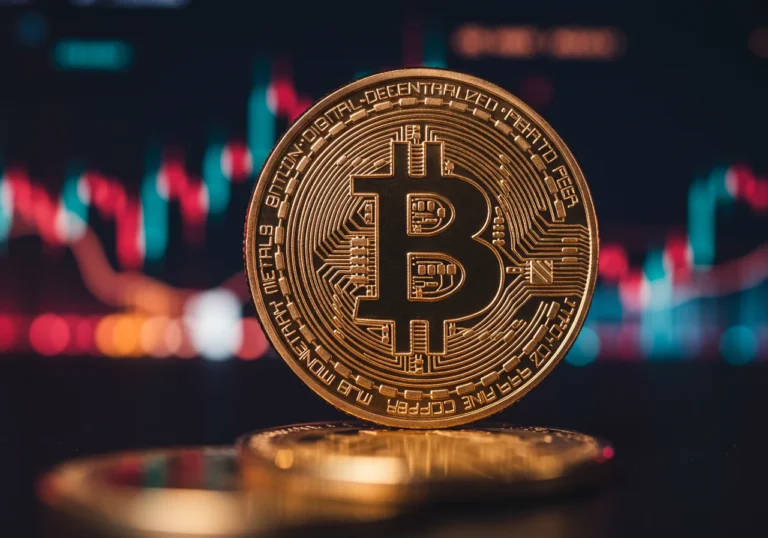Buying with Crypto Just Got Real: Visa Enables USDC Settlements at Big-Name Stores
Imagine grabbing your morning coffee and never realizing that a digital stablecoin helped complete the payment behind the scenes. That’s becoming reality—starting this month, Visa has begun piloting a new system that enables five major retailers to settle transactions using USD Coin (USDC), a widely recognized and reliable stablecoin tied to the U.S. dollar.
It might not make headlines today, but this quiet move signals a major shift in how traditional finance and crypto are starting to merge.
If you’ve ever wondered whether that handful of tokens in your wallet could ever pay for everyday things, this is the moment to pay attention. Behind the scenes, payments giant Visa has been running pilot projects, and now it’s ready to bring them live for retailers including Starbucks, Walmart, Target, McDonald’s, and Sephora. Over the next few weeks, these brands will be able to receive their portion of sales in USDC, giving them faster settlement, lower fees, and built-in currency stability.

Why This Matters More Than You Think
For years, crypto payments felt like a novelty. A handful of cafés and niche online shops accepted Bitcoin or Ethereum, but the experience was clunky: long confirmation times, volatile prices, and manual conversion steps. With USDC, whose value is pegged 1:1 to the U.S. dollar, retailers don’t have to guess whether the dollar they accepted at noon is worth the same dollar a day later.
Imagine you run a coffee shop. You sell a latte for $5.20. Under the old system, you might get Bitcoin, then turn around and sell that Bitcoin for dollars on an exchange—hoping the price didn’t jump or crash in between. Now, Visa lets you settle directly in USDC. You wake up tomorrow, check your crypto wallet, and see exactly 5.20 USDC—no surprises, no extra steps. From there, you can hold it, convert to dollars whenever you like, or even send it to suppliers who accept USDC.
That kind of predictability and speed—settlements occur in minutes, not days—could change the math for small businesses. Lower fees, no volatile swings, and instant confirmation mean more control over cash flow. And if enough shops sign on, your next grocery run or lunch break could be as seamless as paying with any debit card.
How We Got Here
This wasn’t an overnight pivot. Visa started exploring stablecoin settlements in late 2024, running tests with digital asset platforms and fintech partners. They wanted to see if blockchain could really handle the volume, security, and speed that big merchants require.
By spring 2025, trials showed promise: transactions cleared in under five minutes, fraud rates stayed low, and operational costs dipped by around 20% compared to legacy cross-border systems. With green lights all around, Visa quietly approached a handful of global retailers ready to experiment. Now, the first five names are stepping up.
Behind the scenes, Visa’s blockchain group coordinates with Circle (the USDC issuer), on-chain infrastructure providers, and each retailer’s payments team. They set up technical connections, compliance checks, and customer-service scripts so that if anything goes sideways, help is on the line. It’s a big lift, but the payoff—if it works—could be massive.
What This Means for You at the Checkout
For shoppers, nothing changes today. You’ll still tap or swipe your Visa card as usual. But behind that smooth motion, here’s what could be happening soon:
- Your purchase at Sephora might settle in USDC to Sephora’s digital wallet within minutes, instead of dollars arriving in two business days.
- Starbucks could send cash-flow signals faster to its roasters and suppliers, improving inventory and pricing agility.
- Walmart might test regional pricing in token form, then experiment with loyalty or refund models powered by smart contracts.
Down the road, you might even see a “pay with crypto” option in the app—but one that feels just like a normal Visa payment. The difference is in how Starbucks, Walmart, and their bank partners record the sale.
Small Business and Home-User Takeaways
If you’re a small-business owner, this signals a path to lower operational costs and faster cash cycles. Start asking your payments provider: “Do you support stablecoin settlements?” It might still feel niche, but early adopters often get the best deals and support.
For home users, this is a reminder that crypto’s promise isn’t just about investment gains or DeFi yield farming. It’s about using digital money in daily life. As wallets become friendlier and apps integrate stablecoin rails, you could pay rent, groceries, or your kid’s tutoring fee directly in USDC—without extra fees or volatility risk.
What to Watch Next
Keep an eye on these developments:
- Broader rollout: Which other retailers and service providers will join? Hospitality, travel, and utilities might be next.
- Payment apps: Look for Venmo, PayPal, or banking apps to integrate USDC rails, letting you fund normal Visa transactions with stablecoins.
- Regulatory climate: Watch how U.S. and EU regulators view stablecoin settlements. Stricter rules or clearer guidelines could speed adoption—or introduce new hoops.
- User experience: Notice if your app menu sprinkles in “crypto balance” alongside your checking and savings accounts.
This is the start of a journey. The headline is big brands using USDC. The bigger story? Crypto moving from curiosities to just another back-end tool in the payments world.
Table of Contents

Edmilson Dias is the founder of CoinBringer, a site dedicated to educating people about cryptocurrency and helping users navigate the crypto space safely and responsibly. A passionate advocate for digital security and financial education, Edmilson Dias has spent years researching the blockchain ecosystem and translating complex concepts into accessible, practical content for beginners and experienced users alike.With a mission to build a safer and smarter crypto community, he focuses on creating high-quality tutorials, safety tips, and trustworthy insights to empower others in the rapidly evolving world of digital assets.
Discover more from CoinBringer
Subscribe to get the latest posts sent to your email.






